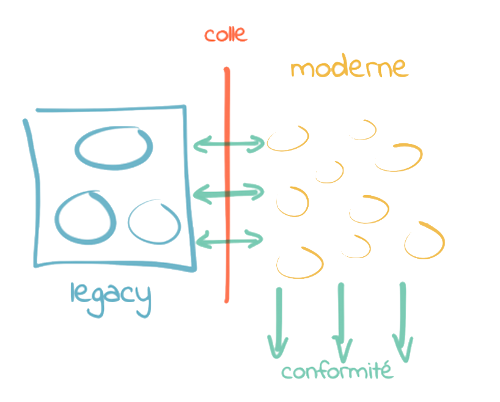Our ideas
For the banking sector, changes related to usage and regulations require constant system updates. These adaptations are expensive and take time to implement. Banks urgently need to find ways of accelerating this process.
A new world of flexibility and openness...
Recently, a number of best practices and new technologies have emerged, designed to facilitate the development of complex systems. These experiments, funded by companies such as Google and Amazon, have made it possible to envisage and design the computer systems of tomorrow. They are based around several different concepts and technologies:
- Microservice architectures: simplifying systems by dividing them into small functionalities
- Event sourcing: making services independent from one another so that they each have their own life cycle
- Containerisation: isolating services at operating system level
- API management: facilitating inter-service communication
- Big Data processing: deploying specialized infrastructures to extract maximum value from all accumulated data
Banks now need to rapidly invest in a modern infrastructure / receptacle with which to implement these concepts and technologies. The technological leap between past and future systems is a significant one, and the gap between players who have invested in this area and those who have not is growing day by day. Amazon is a good example of how tomorrow’s world may look: “At Amazon, we deploy a software improvement every second of the day” – Werner Vogels, CTO

…coexisting with legacy systems
Current (legacy) banking systems constitute a very important asset for most banks. These systems provide critical functionalities and contain millions of lines of code. They have been in operation for 20 to 30 years or more, but are becoming increasingly expensive to upgrade. However, replacing them entirely would be too risky and expensive, and is something very few banks would consider. The solution is to rejuvenate them.
This means enabling them to coexist with tomorrow’s flexible systems. It is necessary to open up interfaces (APIs) in these systems, and to open up their operating systems, applications and databases. You need to invest to reconcile the legacy system with modern standards.



